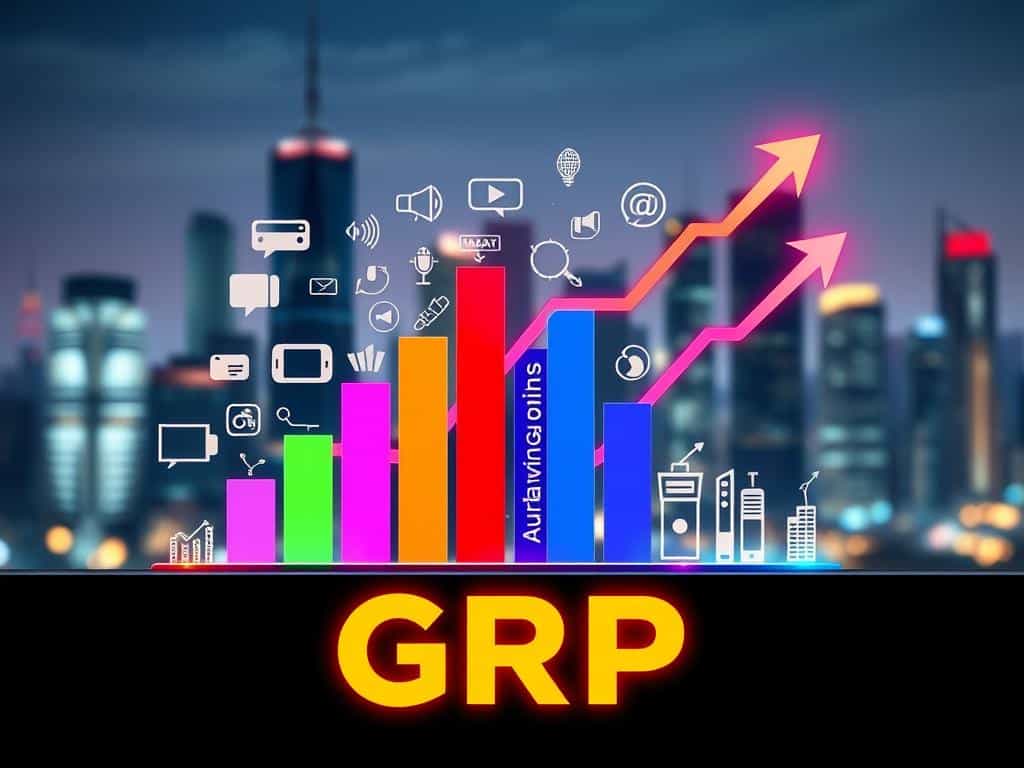When it comes to analyzing advertising campaigns, understanding how to calculate reach and frequency is crucial. These metrics are fundamental elements in evaluating advertising effectiveness and optimizing campaign performance. Reach refers to the total number of unique users exposed to an ad campaign at least once over a specific period. Frequency, on the other hand, measures how often those unique users see the advertisement during the same period. Together, these metrics can help you gauge your ad exposure measurement and improve your media planning strategy.
Calculating reach and frequency involves some straightforward mathematical formulas. For example, the basic formula for calculating reach is impressions divided by frequency. Similarly, frequency is determined by dividing total impressions by the number of unique users. Despite challenges like cross-device tracking limitations and privacy regulations, utilizing tools such as Google AdWords can provide valuable insights when measuring these key marketing metrics. Understanding and leveraging these formulas are essential steps in optimizing your advertising campaign for the best possible results.
Understanding Reach in Advertising
Reach in advertising is a vital metric that helps marketers quantify the number of unique viewers exposed to an advertisement. It defines the breadth of an advertising message’s exposure, indicating how many potential audience members have seen an ad at least once during a marketing campaign.
Definition of Reach
Reach refers to the total number of unique viewers who lay eyes on an advertisement. This metric is essential as it helps advertisers understand the advertising reach of a campaign, revealing the extent of exposure among the potential audience.
Importance of Reach
Understanding the importance of reach is crucial for marketers. This metric enables you to estimate how many potential customers are seeing your campaign. For example, with 60% of the global population using social media and spending an average of 144 minutes daily on these platforms, the ability to measure reach ensures that your marketing efforts are effectively capturing a significant portion of this potential audience. Moreover, 90% of customers trust suggestions from friends more than advertisements, highlighting the necessity to get your ad in front of as many unique viewers as possible.
Methods to Measure Reach
Traditional and modern methods exist to measure reach:
- Traditional Methods: These usually involve using ratings from surveys to estimate reach. Ratings provide average persons data, which helps determine the number of people who will be exposed to an advertisement.
- Digital Analytics Tools: Modern approaches leverage digital analytics tools that track views and interactions on various digital platforms. Digital media provides real-time, highly measurable contextual data, offering more precise insights into user behavior and engagement.
A typical measurement framework might entail:
| Metric | Calculation | Description |
|---|---|---|
| Average Persons | (Population X Rating / 100) | Number of people in the population exposed to a single ad. |
| Gross Rating Points (GRP) | (Spots X Rating) | Measures the campaign’s cumulative impact by calculating the percentage of the population reached. |
| Reach % | (Reach # / Population) | Percentage of people who see the ad at least once. |
As digital media continues to grow in influence, marketers must adapt their strategies to include digital-specific metrics while considering traditional media’s established methods. Understanding and measuring reach ensures your advertising efforts resonate effectively with your target audience.
Understanding Frequency in Advertising
Frequency in advertising plays a pivotal role in ensuring that your target audience is adequately exposed to your ad campaign. This concept is essential for maximizing the impact of your advertisements over time, driving better ad recall and conversions.

Definition of Frequency
Frequency refers to the average number of times an individual is exposed to an advertisement within a specific period. It’s calculated by dividing ad impression counts by the number of unique users reached. The frequency metric helps marketers understand how often their ads are being seen by the same audience, which can influence brand recall and overall campaign effectiveness. Tracking this metric can reveal if your audience is being overexposed or underexposed to your advertisements.
Importance of Frequency
Monitoring the frequency metric is vital for several reasons. A well-balanced frequency ensures that your audience is exposed to your message enough times to remember it, fostering brand recognition without causing ad fatigue. Research indicates that the effective frequency is often around three or more exposures. Frequency affects not just recall but also the perception of the brand; too much exposure can lead to negative impressions, while too little can result in your message being forgotten.
Calculating Frequency: Basic Formulas
To calculate frequency, you’ll need two core metrics: the total number of ad impression counts and the number of unique users who have seen the ads. The formula is simple:
| Metric | Description |
|---|---|
| Total Impressions | Number of times the ad was displayed. |
| Unique Users | Number of distinct individuals who saw the ad. |
The formula to calculate frequency is:
Frequency = Total Impressions / Unique Users
This calculation gives you the average exposure rate, helping you understand how intensively your ad is being presented to your audience. Tools like Nielsen and Comscore can assist in obtaining accurate metrics for more sophisticated analysis. Ensuring an optimal frequency rate aligns with your media planning goals, helping enhance your campaign’s effectiveness.
The Relationship Between Reach and Frequency
The relationship between reach and frequency is pivotal to any advertising strategy. Reach refers to the number of people potentially exposed to a marketing campaign at least once in a set period, while frequency measures how many times each person is exposed to the same marketing aspect more than once within the same period. Finding the right balance is essential to ensure that your ads achieve maximum impact without oversaturation. Effective frequency typically sits around 3+ exposures. Integrating these elements effectively can significantly enhance your campaign reach and drive higher engagement.
How Reach and Frequency Work Together
Reach and frequency work hand-in-hand to build an effective advertising campaign. For instance, when introducing a new product or service, prioritizing reach is crucial to make as many people as possible aware of what you offer. In contrast, frequency is more valuable when you’re looking to establish a brand or build trust within a heavily contested market. Increasing the frequency of exposure in a marketing campaign enhances the likelihood of high-quality engagement and multiple interactions with the brand.
Balancing Reach and Frequency
Balancing reach and frequency requires a strategic approach to media exposure balance. Effective frequency ensures that your ad delivers enough impressions to stick in the consumer’s mind but avoids overexposure that can lead to marketing fatigue. Implementing frequency capping, a tactic to limit the number of times an individual is exposed to an ad, can help manage this balance efficiently. Dayparting, a scheduling method based on the time of day or week, allows for targeted media exposure when your audience is more likely to be engaged. By perfectly balancing your campaign reach with the right frequency, you can optimize your advertising strategy for the best possible return on ad spend (ROAS).
How To Calculate Reach And Frequency In Advertising
Grasping how to calculate reach and frequency in advertising is crucial for mastering advertisement performance tracking and optimizing your ad spend. This section will provide a detailed walkthrough.
Step-by-Step Guide on Using Formulas
Calculating impressions, understanding exposure metrics, and using advertising calculators will help you achieve accurate estimation.
- Reach Calculation: Estimate the number of people likely exposed to your ad. For instance, if one spot reaches 17,386 individuals in Chattanooga, and the total population is 827,900, the Reach Percentage is 10.1%.
- Frequency Calculation: Divide the total number of impressions by reach. For the Chattanooga example, the frequency is 1.04 times. Ensure your ad frequency is between the optimal range of 1.8 to 4, especially for social media ads.
- Gross Rating Points (GRPs): Multiply the number of ad spots by the rating. This helps in understanding the overall reach and effectiveness.
- Cost per Thousand Impressions (CPM): Divide the media cost by impressions (per thousand) to find the cost-effective reach.
Examples and Scenarios
Let’s consider a scenario to illustrate these calculations:
- A campaign targets Chattanooga’s population with 50 ad spots, each reaching 17,386 people.
- Total Impressions: 17,386 (people) × 50 (spots) = 869,300.
- Reach: 17,386 people with a Reach Percentage of 10.1%.
- Frequency: Impressions (869,300) / Reach (17,386) = 1.04.
- If the media cost is $10,000, the CPM can be calculated as $10,000 / (869,300 / 1,000) = $11.50.
Using Tools and Software for Calculations
Several tools and software enhance the ease and accuracy of these calculations:
- Google Analytics: Tracks ad performance, impressions, and frequency.
- Facebook Ads Manager: Provides insights on ad reach and optimal frequency, ensuring your ad stays within the 1.8 to 4 range.
- Excel Advertising Calculators: Useful for manual calculation of GRPs, CPP, CPM, and other metrics.
Employing such tools for advertisement performance tracking can streamline processes and improve your overall advertising strategy.
Factors Affecting Reach and Frequency
Understanding the factors that affect reach and frequency is crucial for optimizing your advertising campaigns. By examining key elements such as market size, demographics, channel selection, and ad quality, you can make informed ad placement decisions and enhance targeting effectiveness. These metrics also play a significant role in boosting audience engagement.
Market Size and Demographics
Market size and demographics are fundamental factors in determining the reach and frequency of your advertising campaign. Larger markets may provide more opportunities to display ads to a broader audience, but also require higher budgets. On the other hand, targeting specific demographics can help tailor your message, enhancing audience engagement and overall targeting effectiveness. Understanding the age, gender, income level, and other characteristics of your target audience can significantly influence your ad placement decisions.
Channel Selection and Media Choices
Choosing the appropriate channels and media for your campaign impacts both reach and frequency. Traditional media like television and radio can offer broad reach, while digital platforms such as social media, search engines, and streaming services tend to provide more precise targeting options. Making informed ad placement decisions ensures that your ads are visible to the right audiences at optimal times. This balance between reach, frequency, and impact allows for better allocation of your advertising budget.
Ad Quality and Content Relevance
The quality and relevance of your ad content cannot be overstated. High-quality ads with compelling and relevant content tend to attract more attention and foster higher audience engagement. It’s critical to create advertisements that resonate with your audience, addressing their needs and preferences. This connection not only boosts the frequency of ad interactions but also increases recall and overall campaign effectiveness. By continually assessing and improving ad quality, you can leverage these metrics, optimize your media plan, and achieve your advertising goals.
| Factor | Impact on Reach | Impact on Frequency |
|---|---|---|
| Market Size & Demographics | Increases potential audience size | Allows targeted frequent exposures |
| Channel Selection & Media Choices | Varies visibility and reach potential | Influences ad repetition rates |
| Ad Quality & Content Relevance | Boosts audience attraction | Enhances interaction and recall |
Real-World Examples of Reach and Frequency Calculations
Real-world case studies showcase the practical application of reach and frequency in marketing success stories. For instance, in digital advertising, exposure to an ad a median of 7 times has been shown to enhance brand lift significantly. This insight is central to designing an effective advertising campaign analysis. Reaching 20 people with a marketing message five times can be more valuable than reaching 100 consumers only once, as frequency plays a crucial role in brand familiarity and correlates with stronger sales.

Practical applications of these metrics are evident in TV ad campaigns as well. By defining and refining market reach, advertisers can target high-value consumers, while calculating frequency helps promote brand familiarity within the audience. A notable example is Apple’s “1984” Super Bowl commercial, which aired only once and had a monumental impact, illustrating how unique exceptions can shape pre-campaign planning.
In everyday scenarios, frequency in TV campaigns is calculated by dividing total measured impressions by total unique users over a specific time frame, giving an average of how often each consumer saw an ad. Conversely, reach involves estimating the number of potential consumers who could see a specific campaign or advertising medium, incorporating the total potential audience of the channel it airs on.
Balancing reach and frequency is essential for delivering a higher ROI and optimizing the effectiveness and profitability of marketing campaigns. Scheduling TV spots appropriately for the prime audience demonstrates how tailored campaigns leverage these metrics to target the most profitable demographic.
A deeper look into marketing success stories highlights the impact of reach and frequency calculations on campaign outcomes. For instance, a campaign generating 10,000 impressions but reaching only 5,000 unique users indicates multiple exposures per individual. Balancing effectiveness demands calculating both reach and frequency, where reach equals the total number of unique users exposed divided by the total target audience, and frequency equals total impressions divided by unique users reached.
Ultimately, leveraging reach and frequency together is fundamental to maximizing ad effectiveness, profitability, and brand awareness. Real-world examples consistently underline the importance of integrating these metrics seamlessly into advertising campaign analysis, embodying the essence of successful marketing strategies. For further insights, explore more about the topic here.
How Does TV Advertising Influence the Calculation of Reach and Frequency?
Tv advertising metrics play a crucial role in evaluating the effectiveness of campaigns by analyzing reach and frequency. These metrics help advertisers determine how many viewers are exposed to an ad and how often they see it, enabling optimized strategies to maximize audience engagement and achieve better results in competitive markets.
Conclusion
In conclusion, understanding and calculating reach and frequency is crucial for optimizing ad campaigns and achieving desired outcomes. By carefully balancing these two metrics, you can significantly enhance your strategic planning, ensuring that your advertisements are seen by the right number of unique users without causing ad fatigue. The importance of these metrics cannot be overstated, as they directly impact your marketing ROI and media buying efficiency.
The example of a campaign with 20 million impressions across 3.5 million unique users illustrates the impact of reach and how it affects the frequency of ads shown to users. By utilizing the formula for calculating ad frequency: Total Impressions divided by Reach, you can better understand your audience’s exposure to your campaigns. Platforms like Google Ads and Meta Ads Manager provide essential tools for setting frequency caps and preventing ad fatigue, highlighting the importance of ad frequency in different mediums, including digital and traditional.
Ultimately, by integrating reach and frequency into your ad strategies, testing different frequencies through A/B testing, and monitoring key performance indicators like click-through and conversion rates, you can ensure that your campaigns are both effective and efficient. These metrics are integral to making informed decisions that drive successful advertising efforts, secure higher marketing ROI, and enhance overall media buying efficiency. Remember, strategic planning with accurate reach and frequency calculations will guide your advertising into delivering optimal results.








